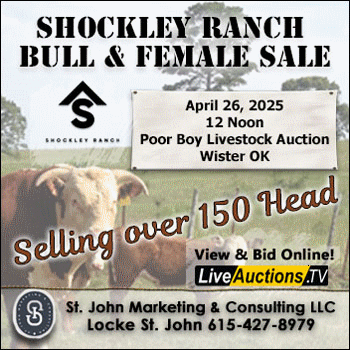Aaron Berger, University of Nebraska Extension
As the 2023 calendar year winds down, this is a good time for spring calving herds to look at what it cost them to produce a calf in the past year. What did it cost to run a cow on your operation this year? How do you calculate the costs? How do you value raised feed, labor, equipment, as well as replacement females grown on the ranch? These questions are frequently asked when the conversation of annual cow costs comes up.
The Estimated Annual Cow Costs for Nebraska is a simple one-page sheet that producers can look at to compare their costs to and see the resulting total to produce a weaned calf under current market conditions in 2023. This budget values all feed at market value, as well as labor, equipment, capital investment and the market value of replacement heifers at weaning. The Center for Ag Profitability Cattle Budgets are another interactive budget tool that producers can download in Excel and use to calculate their own cost of production based on their location and herd size in the state. Frequently, when either of these tools are used and all these costs are tallied, the total surprises many cow-calf producers. A response often heard after tallying up the numbers is, “Does it really cost that much?”
Feed
In looking at this budget, feed is the first and largest cost. For many cow-calf operations, grazed and harvested feed makes up 40 to 70% of annual cow costs. The market value for grazed feed and harvested feed was higher in 2023 as drought conditions, a harsh winter and inflation pushed hay and grass prices higher. In this budget, when all pasture and feed are valued at market price, including what is needed for replacement heifers and bulls, annual feed costs are almost $800 per cow unit.
Labor and Equipment
Labor and equipment costs continue to increase. When labor is valued at what it would cost to hire someone to do the work and depreciation and expenses related to equipment ownership and operations are calculated, it frequently makes up 15% to 30% of the total annual cow costs. Equipment replacement, interest, repairs, maintenance, and operating expenses trended higher in 2023.
Cow depreciation or replacement
Whether replacements are raised or purchased, the costs associated with getting a bred female into the herd are significant. The economic cost of getting a bred replacement into the herd in 2023 is much higher than it was in 2022. When heifers are valued at market price at weaning and all costs from weaning to entering the herd as a bred female are calculated, this total frequently comes in as the third largest cost in a cow-calf budget. In a typical herd where open or old cows are sold and then replaced with bred heifers, the cost to do this often is 15% to 30% of total annual cow costs. A quick way to get an idea of the significance of cow depreciation is to look at the relationship between the market value of bred replacements coming into the herd in relation to the total value of cull cows leaving the herd as well as those that died. Assuming the cow herd keeps a constant head count, this value difference divided by the number of cows in the herd gives a current depreciation relationship value.
Interest rates, other costs increased significantly in 2023
Interest, breeding, veterinary, marketing, and other costs often add up to 10% to 20% of total cow costs. While not as large as other cost categories, they still need to be monitored and analyzed. Interest rates are significantly higher than they were two years ago and that is impacting the cow-calf enterprise. The Bank Prime Loan Interest Rate reported by the St. Louis Federal Reserve as of July 27 of this year was 8.5%. This rate is what commercial banks typically charge customers that are deemed to be the lowest risk when making a loan. To put this in perspective, the reported prime loan rate from March of 2008 through July of 2022 was never higher than 5.5%. For several years during that period, it was 4% or less. The total amount of dollars needed for operating expenses in 2023 is higher due to inflation of input costs and the increasing value of replacement females. The interest rate on operating loans for most producers has doubled from what it was two years ago. More dollars need to be borrowed to operate, and those dollars are being borrowed at a higher interest rate. Interest expenses as a percentage of total operating costs are significantly higher for many producers than they were just two years ago.















